Zenobia

Brief Synopsis
Cast & Crew
Gordon Douglas
Oliver Hardy
Harry Langdon
Billie Burke
Alice Brady
James Ellison
Film Details
Technical Specs

Synopsis
Mrs. Carter, the snobbish social dowager of a small Mississippi town, objects when her son Jeff announces that he is going to marry Mary Tibbett, the daughter of the town's poor but proud country doctor. In turn, Dr. Henry Tibbett, who believes in equality for all, has little patience for the snobbish and hypochondriacal Mrs. Carter. Complications arise when Dr. Tibbett comes to the aid of Zenobia, the sick elephant owned by carnival barker Professor McCrackle, and out of gratitude, the elephant falls in love with him and begins to follow him everywhere. Mrs. Carter seizes upon the opportunity to embarrass Tibbett, and convinces McCrackle to sue the doctor for alienating the affections of the animal. Her scheme backfires, however, when, at the trial, Jeff tells his mother off, thus forcing her to realize her selfishness. She finally consents to her son's marriage to the woman he loves. Thus, the loving couples are reunited, as Mary and Jeff are wed and Zenobia returns to McCrackle and gives birth to a baby elephant.

Director
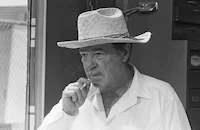
Gordon Douglas
Cast

Oliver Hardy

Harry Langdon

Billie Burke

Alice Brady

James Ellison

Jean Parker
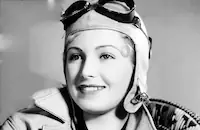
June Lang

Step'n Fetchit

Hattie Mcdaniels
Phillip Hurlic
Miss Zenobia
The Hall Johnson Choir
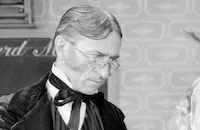
Olin Howland

J. Farrell Macdonald
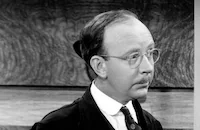
Hobart Cavanaugh

Clem Bevans

Chester Conklin
Tommy Mack
Robert Dudley
Laura Treadwell
Leila Mcintyre
Jac George

Edward Mcwade
Jack Baxley
Walter Lawrence
William J. O'brien
Joe Girard
Malcolm Waite
Bob Perry
Jim Farley
Thomas Pogue
Bill Worthington
Edwin Richey
Sidney Jarvis
Marc Hamilton
Louise Squire
Olive Hatch
Kathryn Sheldon
Cy Ring
Rankin Daugette
Mary Kornman
May Wallace
Jessie Arnold
Robert Mckenzie
Rene Stone
Wade Crosby
Helen Brown
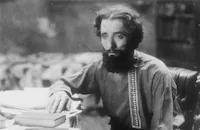
Nigel Debrulier
Mary Foy
Joe Cunningham
Bert Howard
Fay Holderness
Jack Egan
Sam Lufkin
Edna Hall
Colonel Robinson
Arthur Thalasso
John Mccollum
Marie Engel
Luke Cosgrove
Doris Rankin
Toni Tree
Kathleen Mccormick
Peggy Moran
Ed Mortimer
Marie Wells
Susanne Rhodes
Ralph Brooks
Paul Power

Harry Myers
Babe Green
Otto Malde
Gertrude Messinger
Winifred Harris
Amy Busby Roy
Edward Broadnax
Crew
Harry Black
Norbert Brodine
Barney Carr
Walter De Leon
W. B. Delaplain
Corey Ford
Charles D. Hall
Marvin Hatley
Hall Johnson
Bert Jordan
Omar Kiam
William Randall
Ernest Reichert
Hal Roach Jr.
Roy Seawright
W. L. Stevens
Karl Struss
A. Edward Sutherland

Film Details
Technical Specs

Articles
Zenobia
Synopsis: In the small town of Carterville, Mississippi in 1870, Jeff Carter (James Ellison) becomes engaged to Mary Tibbett (Jean Parker). The potential union is a mismatch because Jeff is the son of the wealthy Mrs. Emily Carter (Alice Brady), while Mary is the daughter of the flighty Mrs. Bessie Tibbett (Billie Burke) and a doctor, Henry Tibbett (Oliver Hardy) who has given himself over to charity cases and has willfully seen his family fall in social position. Mrs. Tibbett asks the household servant, Zero (Step'n Fetchit) to tell Dr. Tibbett of the engagement, but the dull-witted Zero can't remember the news. The household cook, Dehlia (Hattie McDaniel), won't tell Dr. Tibbett the news either, but little Zeke (Phillip Hurlic) finally lets the cat out of the bag. Dr. Tibbett is delighted with the news, but has to comfort Mary, who is worried because Jeff's mother has "social ideas." Dr. Tibbett defends his ideals, and points to a copy of the Declaration of Independence which hangs on the wall. He declares, "I wasn't happy feeding pink pills to Mrs. Carter and her rich friends. I'd rather do something for somebody who needs a doctor, even if they can't pay their bills." The Tibbett family then deals with two extreme situations - Mrs. Carter does indeed object to her son's engagement to Mary, and meanwhile, Dr. Tibbett answers a call to help a patient at Spangler's Carnival on the edge of town, an elephant named Zenobia. Her handler, Professor J. Thorndyke McCrackle (Harry Langdon) is appreciative of the doctor's help, and is as surprised as anyone when Zenobia shows her gratitude by following Dr. Tibbett everywhere around town.
Oliver Hardy's solo outing in Zenobia came about due to a long-simmering dispute between Stan Laurel and Hal Roach, which had finally reached a breaking point in 1938. After the Laurel and Hardy feature Block-Heads (1938) had wrapped shooting, Laurel staged a "walkout" on Roach, refusing to participate in retakes for the film; the two had butted heads before, but this time Laurel was put on suspension, and it looked like the long string of Laurel and Hardy comedies made at Hal Roach Studios was over. The feud was reported in both the trade and popular press. As Richard Lewis Ward wrote in his book A History of the Hal Roach Studios, "ever since Laurel and Hardy began working at [Hal Roach Studios], as solo players and at different times, Roach had kept each under contracts as separate performers rather than as a team. Since these contracts invariably came up for renewal at different times, the situation had worked somewhat to Roach's advantage, making it difficult for the team to leave the studio as a unit to seek employment elsewhere..." Laurel had a multiple picture contract with Roach at the time, while Hardy had a multiple year contract. While Stan was on suspension he had planned to wait out the remainder of Hardy's contract with Roach, then sign with a new studio as a team.
Roach had no intention to let his contract star Oliver Hardy sit idle; he announced that he was suing Laurel for breach of contract and would begin a new series of films starring Hardy and Langdon. The press generated was apparently a ploy for Roach to apply pressure to Laurel. Roach dug into his files and retrieved a short story by H.C. Brunner called "Zenobia's Infidelity," which he had purchased as a possible vehicle for Roland Young, the comic actor who had been a hit in the title role of Roach's Topper (1937). The leading role of Dr. Tibbett was very different from the supporting role of Professor McCrackle; in no way were Hardy and Langdon a "team" in the traditional sense - in fact, the two had very few scenes together.
Just as Oliver Hardy played a well-rounded character in Zenobia who was very different from the "Ollie" of the Laurel and Hardy series, Harry Langdon also played a character part quite different from his most famous screen persona. By 1939, Langdon already had a history at Hal Roach Studios. Following his dramatic fall from favor in silent features (after he took over the directing responsibilities from Frank Capra starting with Three's a Crowd in 1927), Langdon accepted an offer from Roach to star in a series of talking short subjects and made eight two-reelers for Roach from 1929-1930. In spite of the fact that Langdon developed a voice suitable for his screen persona and had the good fortune to be surrounded by top-notch support from such Roach regulars as Thelma Todd and Edgar Kennedy, the shorts failed at the box office and Roach terminated Langdon's contract. Langdon went on to do low-budget shorts at Educational and Columbia Pictures and to tour Europe with his stage show, but by 1937 he was broke. He briefly moved with his family into the home of one of his biggest admirers, Stan Laurel. Laurel promised Langdon work as a writer on future Laurel and Hardy films, beginning with Block-Heads. Langdon's presence on the Roach lot as a writer ensured that he would also be given supporting parts in other Roach pictures. Langdon's biographer William Schelly wrote (in Harry Langdon: His Life and Films), "Harry was also friends with Oliver Hardy ('Babe' to his friends). They shared several leisure interests in common. Both had a passion for golf, and both loved a backyard barbecue. The Langdons and Hardys saw a fair amount of each other in other settings. Several photographs show them together in restaurants or around piano in song."
In addition to Langdon, the rest of the supporting cast of Zenobia is peppered with veteran comedy players. Billie Burke, "Mrs. Topper" from the Roach series of features, plays the constantly bewildered wife of Dr. Tibbett. Two iconic African-American comedic actors, Hattie McDaniel and Step'n Fetchit, appear as the frequently seen Tibbett household servants. The two actors were on opposite career trajectories in 1939; Step'n Fetchit was near the end of his days appearing in major studio features, while McDaniel was at her peak and would take home the Oscar® for Best Supporting Actress the following year for her role in David O. Selznick's Gone with the Wind (1939). The presence of the subservient African-American characters should not be surprising for a story set in the Deep South of the immediate post-Civil War years, but the situation is made severely obvious and ironic because the main theme of the story is class inequality - among whites. The moviemakers go out of their way, in fact, to raise the issue when they have Dr. Tibbett encourage Zeke, the servant's young boy, to memorize and recite the Declaration of Independence. In his book Stan and Ollie: The Roots of Comedy: The Double Life of Laurel and Hardy, Simon Louvish makes note of the awkwardness and writes, "When the boy asks why just because his skin is black he can't mix with the white folks at the grand party, he gets a somewhat embarrassed lecture by Dr. Tibbett on the black pills and the white pills in the medicine cabinet, which are each good for something, but in a different way. This little homily... is then contradicted by Dr. Tibbett showing the boy the Declaration of Independence, and offering him a quarter if he can learn it all by heart." When the boy later recites the line "all men are created equal" to an all-white audience of townsfolk, the naive intent of the scriptwriters is to merely point up the slight differences in class between the Carters and the Tibbetts. The larger message of the inequality of the races was not even intended for consideration in 1939, although it is clearly the elephant in the room.
Roach did not skimp on production values for Zenobia. The photography was by veteran cinematographer Karl Struss, who had won the Oscar® for Sunrise (1927) and had gone on to shoot such classics as Dr. Jekyll and Mr. Hyde (1931), The Sign of the Cross (1932), The Story of Temple Drake (1933), and many others. Zenobia was designed by Charles D. Hall, who started as the art director for almost all of Charles Chaplin's films in the 1920s; before working with Hal Roach, Hall also designed most of the classic Universal horror films of the early 1930s, including Dracula (1931), Frankenstein (1931), The Invisible Man (1933), The Black Cat (1934), and Bride of Frankenstein (1935).
All of the reviews of Zenobia at the time of release made much of Hardy without Laurel and reinforced the notion of a new comedy team. The critic for Variety wrote, "Teamed with Harry Langdon - drafted to replace Stan Laurel - Hardy gives out with a minimum of slapstick antics and knockabout stunts. A few of Hardy's double-takes remain, but the rest is a straight portrayal." He goes on to fault the "slender story" and says the "script is a series of incidents tied together in [a] not too compact form." Writing for The Spectator in England (where the film was known as An Elephant Never Forgets), Graham Greene wrote that "Mr. Hardy thought he could bring it off alone - he even tries to be dignified and pathetic... but it won't work. When his hat is flattened under an enormous hoof and he lifts it with the expression of patient stifled fury, we look sadly round for blinking twisting Laurel, and Zenobia, the elephant, is no substitute."
There was to be no follow-up Langdon-Hardy movie; although Roach announced one to the press to be called Road Show, it was just hyperbole. "Road Show" was merely a placeholder title commonly used at the studio when a property had no proper title, and in this case there was no actual property in development. Laurel settled his differences with Roach and Hardy was soon in front of the cameras with his old partner again. Harry Langdon remained friendly with both Stan and Babe and contributed gags to their next three features.
Producer: A. Edward Sutherland
Director: Gordon Douglas
Screenplay: Corey Ford (screenplay); Walter De Leon, Arnold Belgard (story); Norm Blackburn (treatment, uncredited); H.C. Brunner (story, uncredited)
Cinematography: Karl Struss; Norbert Brodine (uncredited)
Art Direction: Charles D. Hall
Music: Marvin Hatley
Film Editing: Bert Jordan
Cast: Oliver Hardy (Dr. Henry Tibbett), Harry Langdon (Professor McCrackle), Billie Burke (Mrs. Bessie Tibbett), Alice Brady (Mrs. Emily Carter), James Ellison (Jeff Carter), Jean Parker (Mary Tibbett), June Lang (Virginia Reynolds), Olin Howland (Attorney Culpepper), J. Farrell MacDonald (Judge), Step'n Fetchit (Zero), Hattie McDaniel (Dehlia), Phillip Hurlic (Zeke).
BW-73m.
by John M. Miller

Zenobia
Quotes
Trivia
Notes
The working titles of this film were It's Spring Again and Zenobia's Infidelity. According to a news item in Hollywood Reporter, Norman Blackburn wrote a preliminary treatment for this film, which was to have featured Roland Young as the male lead. Blackburn's participation in the final film has not been confirmed, however. Modern sources add that although producer Hal Roach considered Young for the lead, he decided to cast Oliver Hardy in the role when Stan Laurel sued the studio for breach of contract, thus temporarily breaking up the comedy duo of Laurel and Hardy. This was the first feature film Hardy made without Laurel since the beginning of their partnership. Although the Call Bureau Cast Service lists Norbert Brodine as cameraman, he is not credited onscreen or in reviews. This picture marked director A. Edward Sutherland's debut as a producer.














